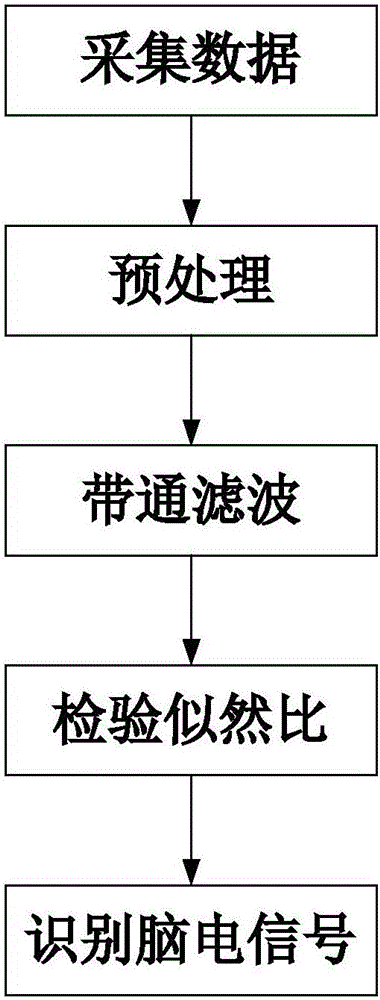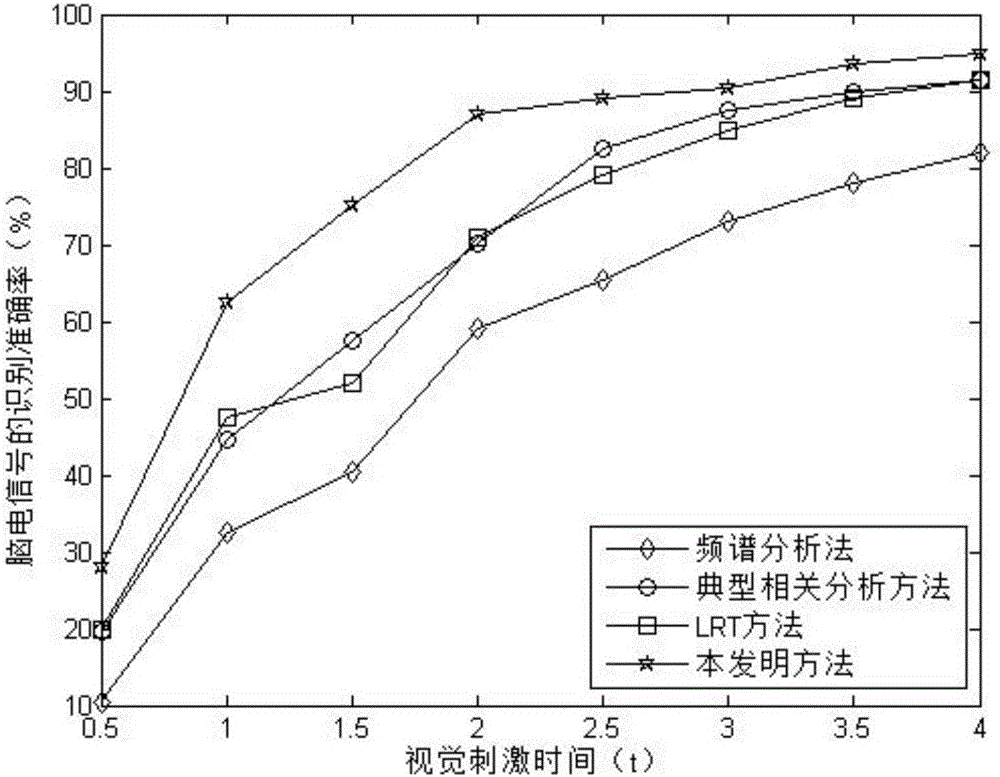Stable state visual sense induced EEG signal processing method
A steady-state visual eliciting and EEG signal technology, applied in the information field, can solve problems such as difficulty in meeting people's requirements, fewer four control commands, and affecting recognition accuracy, so as to improve recognition accuracy, shorten stimulation time, and realize real-time Detection effect
- Summary
- Abstract
- Description
- Claims
- Application Information
AI Technical Summary
Problems solved by technology
Method used
Image
Examples
Embodiment Construction
[0031] The present invention will be further described below in conjunction with the accompanying drawings.
[0032] Refer to attached figure 1 , the concrete steps of the present invention are as follows.
[0033] Step 1, collect data.
[0034] Through the electrode cap worn by the subject, the EEG signal collection system collects brain data of 1024 sampling points of all electrodes on the electrode cap under the stimulation of 40 white square blocks flashing at different frequencies on the visual stimulation display screen. electric signal.
[0035] refer to figure 2 , the sequence of the visual stimulation of the present invention is: the subject rests at the beginning of 0 second to 1 second, then 40 white square blocks flash according to different frequencies, and last for 4 seconds, during which the subject chooses a white square block to watch For 4 seconds, perform visual stimulation. Rest for 1 second after each visual stimulus, and then choose another flashing...
PUM
 Login to View More
Login to View More Abstract
Description
Claims
Application Information
 Login to View More
Login to View More - R&D
- Intellectual Property
- Life Sciences
- Materials
- Tech Scout
- Unparalleled Data Quality
- Higher Quality Content
- 60% Fewer Hallucinations
Browse by: Latest US Patents, China's latest patents, Technical Efficacy Thesaurus, Application Domain, Technology Topic, Popular Technical Reports.
© 2025 PatSnap. All rights reserved.Legal|Privacy policy|Modern Slavery Act Transparency Statement|Sitemap|About US| Contact US: help@patsnap.com



